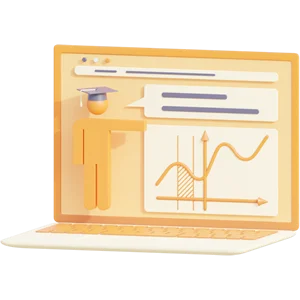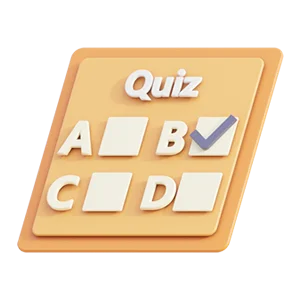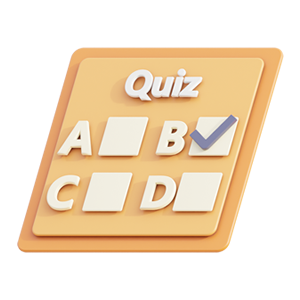LITTLE AND FALACE'S DENTAL MANAGEMENT OF THE MEDICALLY COMPROMISED PATIENT 9TH EDITION TEST BANK
TEST BANK FOR LITTLE AND FALACE'S DENTAL MANAGEMENT OF THE MEDICALLY COMPROMISED PATIENT 9TH EDITION TEST BANK ISBN-978-0323443555
TEST BANK
LITTLE AND FALACE'S DENTAL
MANAGEMENT OF THE MEDICALLY
COMPROMISED PATIENT
9TH EDITION
TEST BANK
Little: Dental Management of the Medically Compromised Patient, 9th Edition Test Bank
Table of Contents
PART ONE: PATIENT EVALUATION AND RISK ASSESSMENT
Chapter 1: Patient Evaluation and Risk Assessment
PART TWO: CARDIOVASCULAR DISEASE
Chapter 2: Infective Endocarditis
Chapter 3: Hypertension
Chapter 4: Ischemic Heart Disease
Chapter 5: Cardiac Arrhythmias
Chapter 6: Heart Failure (or Congestive Heart Failure)
PART THREE: PULMONARY DISEASE
Chapter 7: Pulmonary Disease
Chapter 8: Smoking and Tobacco Use Cessation
Chapter 9: Sleep-Related Breathing Disorders
PART FOUR: GASTROINTESTIAL DISEASE
Chapter 10: Liver Disease
Chapter 11: Gastrointestinal Disease
PART FIVE: GENITOURINARY DISEASE
Chapter 12: Chronic Kidney Disease and Dialysis
Chapter 13: Sexually Transmitted Diseases
PART SIX: ENDOCRINE AND METABOLIC DISEASE
Chapter 14: Diabetes Mellitus
Chapter 15: Adrenal Insufficiency
Chapter 16: Thyroid Diseases
Chapter 17: Pregnancy and Breast Feeding
PART SEVEN: IMMUNOLOGIC DISEASE
Chapter 18: AIDS, HIV Infection, and Related Conditions
Chapter 19: Allergy
Chapter 20: Rheumatologic and Connective Tissue Disorders
Chapter 21: Organ and Bone Marrow Transplantation
PART EIGHT: HEMATOLOGIC AND ONCOLOGIC DISEASE
Chapter 22: Disorders of Red Blood Cells
Chapter 23: Disorders of White Blood Cells
Chapter 24: Acquired Bleeding and Hypercoagulable Disorders
Chapter 25: Congenital Bleeding and Hypercoagulable Disorders
Chapter 26: Cancer and Oral Care of the Patient
PART NINE: NEUROLOGIC, BEHAVIORAL, AND PSYCHIATRIC DISORDERS
Chapter 27: Neurologic Disorders
Chapter 28: Anxiety, Eating Disorders, and Behavioral Reactions to Illness
Chapter 29: Psychiatric Disorders
Chapter 30: Drug and Alcohol Abuse
Chapter 01: Patient Evaluation and Risk Assessment
Little: Dental Management of the Medically Compromised Patient, 9th Edition
MULTIPLE CHOICE
1. Elective dental care should be deferred for patients with severe, uncontrolled hypertension,
meaning that the blood pressure is greater than or equal to mm Hg.
a. 200/140
b. 180/140
c. 180/110
d. 160/110
ANS: C
Elective dental care should be deferred for patients with severe, uncontrolled hypertension,
which is blood pressure greater than or equal to 180/110 mm Hg, until the condition can be
brought under control.
2. The American Heart Association currently recommends antibiotic prophylaxis for a patient
with which of the following cardiac conditions?
a. Mitral valve prolapse
b. Prosthetic heart valve
c. Rheumatic heart disease
d. Pacemakers for cardiac arrhythmias
ANS: B
Previously, the American Heart Association (AHA) recommended antibiotic prophylaxis for
many patients with heart murmurs caused by valvular disease (e.g., mitral valve prolapse,
rheumatic heart disease) in an effort to prevent infective endocarditis; however, current
guidelines omit this recommendation on the basis of accumulated scientific evidence. If a
murmur is due to certain specific cardiac conditions (e.g., previous endocarditis, prosthetic
heart valve, complex congenital cyanotic heart disease), the AHA continues to recommend
antibiotic prophylaxis for most dental procedures.
3. One consequence of chronic hepatitis (B or C) or cirrhosis of the liver is decreased ability of
the body to certain drugs, including local anesthetics and analgesics.
a. absorb
b. distribute
c. metabolize
d. excrete
ANS: C
Patients also may have chronic hepatitis (B or C) or cirrhosis, with impairment of liver
function. This deficit may result in prolonged bleeding and less efficient metabolism of
certain drugs, including local anesthetics and analgesics.
4. Which of the following symptoms and signs is most consistent with allergy?
a. Heart palpitations
b. Itching
c. Vomiting
d. Fainting
WWW.GRADESMORE.COM
Stuvia.com - The Marketplace to Buy and Sell your Study Material
Page 1 of 74
GRADESMORE.COM
WWW.NURSYLAB.COM
ANS: B
Symptoms and signs consistent with allergy include itching, urticaria (hives), rash, swelling,
wheezing, angioedema, runny nose, and tearing eyes. Isolated signs and symptoms such as
nausea, vomiting, heart palpitations, and fainting generally are not of an allergic origin but
rather are manifestations of drug intolerance, adverse side effects, or psychogenic reactions.
5. Which of the following is true of the patient with a history of tuberculosis?
a. A positive result on skin testing means that the person has active TB.
b. Most patients who become positive skin testers develop active disease.
c. Patients with acquired immunodeficiency syndrome (AIDS) have a high incidence
of tuberculosis.
d. A diagnosis of active TB is made by a purified protein derivative (PPD) skin test.
ANS: C
The potential coexistence of tuberculosis and acquired immunodeficiency syndrome (AIDS)
should be explored because patients with AIDS have a high incidence of tuberculosis. A
positive result on skin testing means specifically that the person has at some time been
infected with TB, not necessarily that active disease is present. Most patients who become
positive skin testers do not develop active disease. A diagnosis of active TB is made by chest
x-ray, imaging, sputum culture, and clinical examination.
6. Vasoconstrictors should be avoided in patients who cocaine or methamphetamine users
because these agents may precipitate .
a. severe hypotension
b. severe hypertension
c. respiratory depression
d. cessation of intestinal peristalsis
ANS: B
Vasoconstrictors should be avoided in patients who are cocaine or methamphetamine users
because the combination may precipitate arrhythmias, MI, or severe hypertension.
7. It has been shown that the risk for occurrence of a serious perioperative cardiovascular event
(e.g., MI, heart failure) is increased in patients who are unable to meet a -MET (metabolic
equivalent of task) demand during normal daily activity.
a. 4
b. 6
c. 8
d. 10
ANS: A
Daily activities requiring 4 METs include level walking at 4 miles/hour or climbing a flight of
stairs. Activities requiring greater than 10 METs include swimming and singles tennis. An
exercise capacity of 10 to 13 METs indicates excellent physical conditioning.
8. Which of the following alterations in the fingernails is associated with cirrhosis?
a. Yellowing
b. Clubbing
c. White discoloration
d. Splinter hemorrhages
Preview document (3 of 118 pages)
Knoowy benefits
$ 36,97
 Money back guarantee
Money back guarantee
 Documents can be downloaded immediately
Documents can be downloaded immediately
 $0.50 discount when paying with balance
$0.50 discount when paying with balance
-
 Receive free quiz questions with document
Receive free quiz questions with document

Specifications
- School: Open University
- Course: Healthcare
- Subject: Dental Management
- All documents for this course ›
- Subject code: Dental Management
- All documents for this course ›
- Date of exam: 2023
- Year of study: 2023
Document
- Section: Examinations
- Updated on: 09-27-2023
- Made on: 09-02-2023
- Type: .pdf
- Pages: 118
- Language: English
Tags
Seller
At the heart of learning' I have extensive knowledge of all content areas for Nursing Education. Good experience with all required nursing program exams both standardized as well as for certification If you find my study materials valuable to your course, please drop a review and share the knowledge by referring other learners. Happy Studying!
Earn from your summaries?
Subjects of Healthcare - Open University
More Healthcare ›ace health coach chapter 1 quiz – questions and answers- latest 2023/2024 ace health coach exam:section 2 chapters 4-7 | latest 2023/2024 anatomy anatomy and physiology asvab ati ati pharmacology exam review with complete solutions| latest 2023/2024 ati pharmacology learning system quiz with complete solutions | latest 2023/2024 solutions ati pharmacology practice assessment questions with complete solutions | latest 2023/2024 ati pharmacology proctor 2019 questions with approved answers (already graded a+) ati pharmacology questions with 100% correct solutions | latest 2023/2024- graded a+ ati pharmacology quiz 1 with complete solutions | latest 2023/2024 bacteriology biology healthcare - nursing hesi medical imaging physics mental health microbiology nursing nurtion pharmacology psychology severe obesity blunts antibody response to covid test bank for nursing research in canada: methods, critical appraisal, and utilization, 4th edition lobiondo-wood isbn: 9781771720984
 Deal: get 10% off when you purchase 3 or more items!
Deal: get 10% off when you purchase 3 or more items!
Deal: get 10% off when you purchase 3 or more items!









